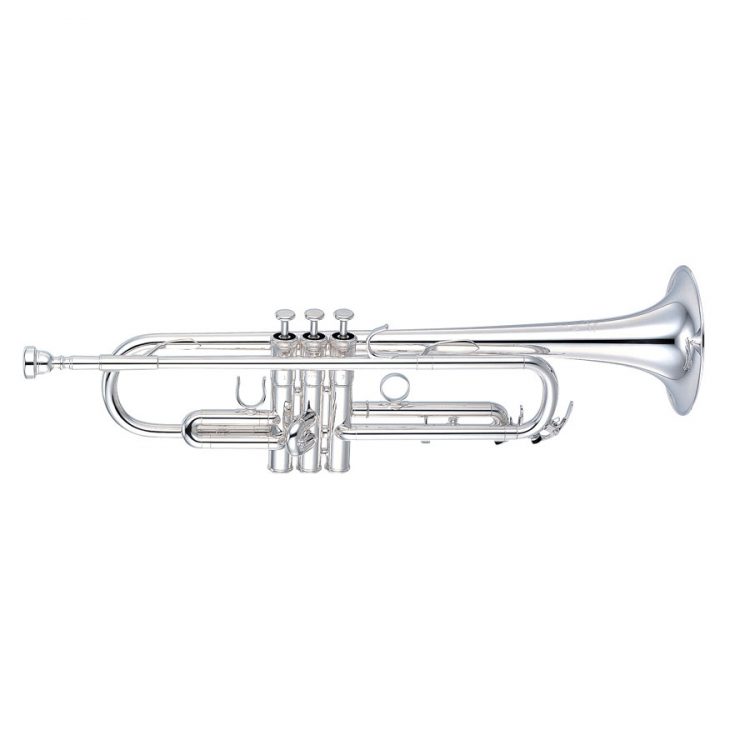YAMAHA YTR-8310 ZS Trompete
Die „Z“ entstand in langer und intensiver Zusammenarbeit mit dem legendären Trompeter Bobby Shew. Bobby ist ein unglaublich vielseitiger Musiker, und um alle seine musikalischen Seiten zu bedienen war es notwendig ein Instrument zu schaffen, dass ebenso für Lead-Trompete als auch für sanfte Balladen geeignet ist. Er fand dieses Instrument in der „Z“.
Test der Yamaha YTR-8310Z von Bobby Shew
Nach so vielen Jahrzehnten, in denen ich Trompetern beim Ausprobieren verschiedener Instrumente in Musikgeschäften, auf Konferenzen, Messen usw. zugesehen und zugehört habe, habe ich mich entschlossen, einen Artikel über das Testen von Hörnern zu verfassen, von dem ich denke und hoffe, dass er ein gewisses Maß an Sensibilität für den Testprozess vermitteln wird. Eine Testsitzung, die ohne ein einigermaßen klares Verständnis der Funktionsweise unseres Körpers, unseres Gehirns und unseres Verstandes durchgeführt wird, wird höchstwahrscheinlich zu einer Enttäuschung oder einem falschen Verständnis des zu testenden Instruments führen.
Wie wir wissen, sind wir alle „Gewohnheitstiere“!
Von Kindheit an legen wir Muster fest, wie wir funktionieren. Das beginnt vielleicht mit dem Krabbeln, dem Gehen, dem Laufen und ALLEM anderen, was wir im Laufe unserer Entwicklung und unseres Wachstums lernen. Diese Muster, die einfach als „Gewohnheiten“ bezeichnet werden, sind in Wirklichkeit eine Kombination aus Muskeln und Nerven und werden wissenschaftlich/medizinisch als „neuro-muskuläre“ Muster aktiviert, die in der Vielzahl von Neuronen in unserem Gehirn fest verankert sind. Die Medizin war viele Jahre lang der Meinung, dass man einem alten Hund keinen neuen Trick beibringen kann“, aber wir wissen inzwischen sehr gut, dass dies nicht stimmt. In den letzten Jahren ist das Thema Neuroplastizität in den Blickpunkt des Interesses gerückt, und es wurden wirksame, verwandte Techniken entwickelt, um alte Gewohnheiten zu ändern oder als „schlecht“ angesehene Gewohnheiten zu überwinden. Diese Gewohnheiten sind übrigens alle auf der unterschwelligen oder unterbewussten Ebene angesiedelt und werden oft als „Autopilot“ bezeichnet.
Beim Testen eines neuen Instruments sollten Sie nicht auf „Autopilot“ gehen.
Es ist üblich, dass Ihr Körper auf „Autopilot“ geht, wenn Sie ein neues Instrument ausprobieren, weil diese etablierten Muster, die unterschwellig sind, NICHT wissen, dass Sie ein anderes Instrument gewählt haben. Ihr bewusster Verstand ist sich des anderen Horns sehr wohl bewusst, aber die körperliche Art und Weise, wie Sie das Horn spielen werden, wird von den unterschwelligen „Autopilot“-Dateien bestimmt. Wenn Sie zum Beispiel auf einem Instrument mit großer Bohrung gespielt haben, wird Ihr Körper das neue Horn mit denselben physischen Mustern angehen, die er auf diesem Instrument verwendet hat. Wie Sie vielleicht wissen, handelt es sich bei der Yamaha „Z“ um eine Stufentrompete, die auf einem Ventilgehäuse mit mittlerer Bohrung basiert und sich daher von einer großkalibrigen Trompete unterscheidet. Da es sich hierbei um ein ziemlich einzigartiges Design handelt, besteht die natürliche Tendenz, die „Z“ zu überblasen, was zu einer schlechten Reaktion führt – dem Gefühl, dass das Horn „stickig“ ist. Das Instrument mit der größeren Bohrung benötigt eine größere Luftmenge, um die gewünschte Reaktion zu aktivieren, aber diese Luftmenge ist viel zu viel für ein Instrument mit kleinerer Bohrung. Mit anderen Worten: Sie können nicht einen Liter Wasser (oder Luft) in einen Halbliterbehälter füllen. Wenn Sie dies versuchen, wird es sich natürlich stauen und eng oder stickig anfühlen.
Wie Sie wahrscheinlich schon erfahren haben, versuchen die meisten Leute, die auf Messen Trompeten testen, sofort zu sehen, wie hoch sie spielen können. In den meisten Fällen ist das Scheitern darauf zurückzuführen, dass man nicht weiß, wie man ein neues Horn richtig testet. Es gibt jedoch einen klügeren Weg, einen Test durchzuführen. Meiner Meinung nach schlage ich vor, JEDEN Spieltest im mittleren Register zu beginnen, in einer Mezzoforte-Dynamik. Ich denke, dass das Spielen der F-Konzertskala (auf einem B-Horn), beginnend auf Linie 2 des Notensystems, ein idealer Ausgangspunkt ist, weil es das mittlere Register eines gut entwickelten Bereichs eines guten Spielers darstellt. Die extremen unteren und oberen Register sind am schwierigsten zu meistern, und wenn man zu tief anfängt, kann das ebenso zu Schwierigkeiten führen wie wenn man zu hoch anfängt.
Nachdem man die F-Konzert-Tonleiter mit mehreren Wiederholungen auf- und absteigend im Mezzoforte gespielt hat, bis man sich einigermaßen wohlfühlt, spielt man dieselbe Tonleiter noch einmal in Forte-Dynamik mit ähnlichen Wiederholungen, bis man sich wieder wohlfühlt. Zum Schluss sollte dieselbe Tonleiter noch einmal im Pianissimo gespielt und wiederholt werden, bis man sich einigermaßen wohl fühlt. Wenn Sie diese Schritte durchführen, werden Sie ein erstaunliches Bewusstsein für die Anpassungen entwickeln, die notwendig sind, um die besten Ergebnisse mit diesem neuen Instrument zu erzielen. Nachdem Sie diese Erkenntnis gewonnen haben, können Sie beginnen, die Register zu erweitern, wenn gewünscht in beide Richtungen, aber immer noch unter Verwendung der drei grundlegenden Dynamiken und Wiederholungen, um das Bewusstsein zu erweitern. Der logische nächste Prozess wäre der vom tiefen zum hohen C. Ich hoffe, dass Ihnen diese Testmethode hilft. (Übrigens funktioniert sie bei JEDER Marke und auch bei anderen Arten von Hörnern, d. h. bei tiefen Blechbläsern, Holzbläsern usw.). Vielen Dank und viel Erfolg bei Ihren Tests.
Bobby Shew


